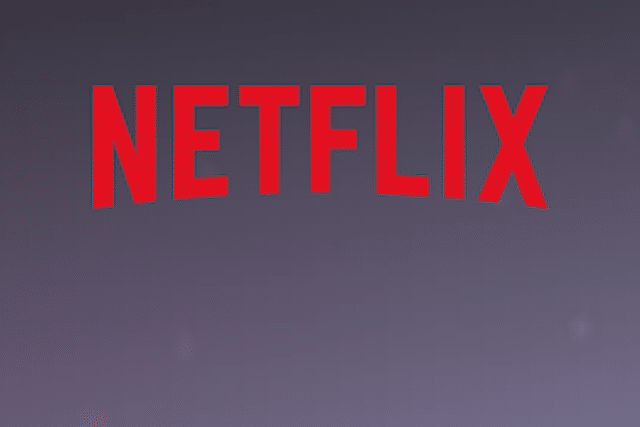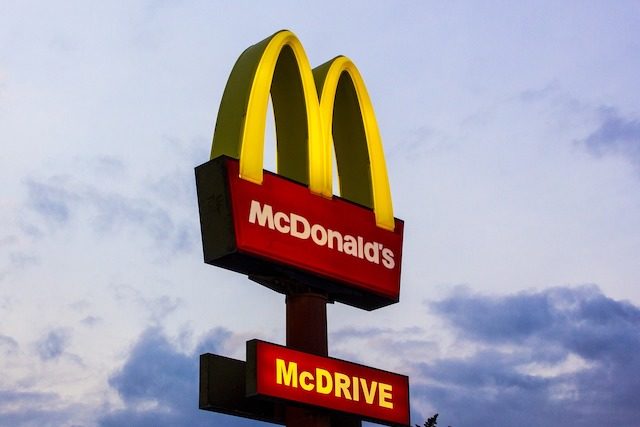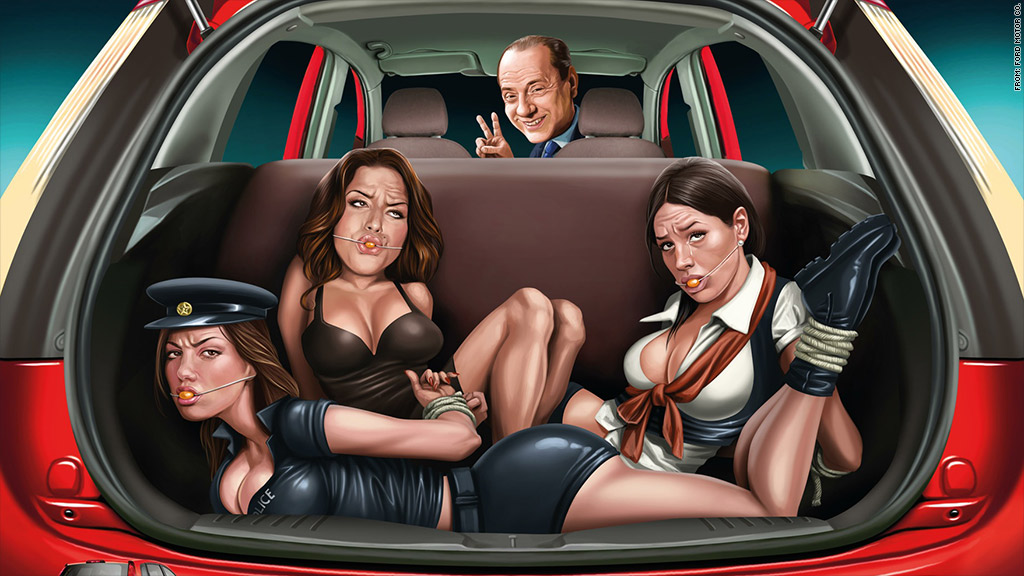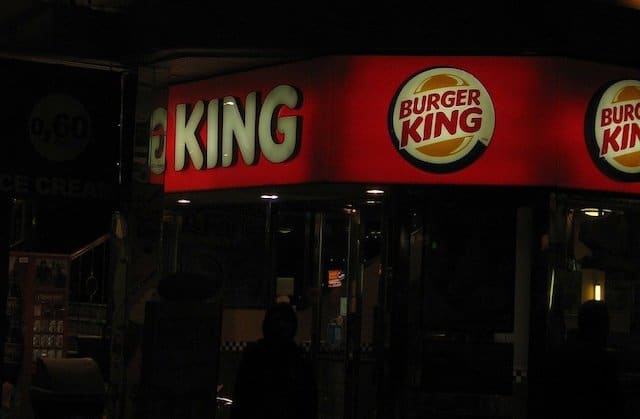Marketing campaigns are at their best ways to entertain and educate you about new products. At their worst they are offensive, misguided, and catastrophic to a company’s bottom line. There are times when marketing can go so wrong that it can bury a company. And then there are other times we can go so wrong the company probably wishes it was buried.
10. Netflix Cuties

Netflix has a library of several thousand movies and is adding new content all the time. A movie called Cuties, known in the original French as Mignonnes, is a documentary that won a screenplay award and a directing prize at the Sundance Film Festival. The movie is about an 11 year old Senegalese Muslim girl. The film documents our struggle between her family values and a group of less traditional girls. Part of this film deals with what is described by those who have seen it has the hypersexualization of pre-adolescent girls. That is to say it’s an aspect of the film, but it’s not in any way a movie about sexualizing young girls. In comes Netflix.
The original poster artwork for the movie in French features some girls running down the street with some shopping bags and confetti. The artwork Netflix opted to go with features young girls wearing very little clothing in some sexual poses. Remember, these are preteen girls. By any estimation, the artwork Netflix chose was inappropriate.
Even though the movie hadn’t debuted on Netflix yet the uproar against it was massive. People didn’t know what the movie it was about and they didn’t need to know either. An online petition gathered over 150,000 signatures in a day to get rid of the movie. It was nearly 300,000 signatures strong within another day or two.
Netflix apologized for the artwork but so far it’s not refused to cancel the premiere of the film even though many people are still protesting against it.
9. Casa Sanchez Tattoos

Everyone loves burritos, and with good reason. Burritos are delicious. The Casa Sanchez family restaurant realized that and so, in an effort to promote their restaurant, they came up with what must have surely seemed like an ingenious marketing campaign one day. Free lunch for life to anyone who goes out and gets the restaurant’s logo tattooed on their body. It was almost too clever. Actually, no: it was too clever.
Owner Martha Sanchez had greatly underestimated either people’s willingness to get tattooed on a whim, or their love of her burritos. Maybe both. Sanchez actually thought no one would go through with the act of getting a tattoo featuring a kid in a sombrero sitting on top of a giant ear of corn. By the time 40 people had gotten the tattoo the Sanchez family realized something had really gone off the rails for them.
If every person who got the tattoo followed through on the offer for a free $8 lunch every day for the next 50 years of life, then Casa Sanchez was going to be spending just shy of $6 million on free burritos.
The restaurant did end up closing the campaign down, but they didn’t default on the deal and have held true to their word so that everyone who got the tattoo while the deal was still running is entitled to their free lunch every single day.
8. Oh My God I’m Gonna Puke
As natural as bodily functions are, they don’t necessarily lend themselves all that well to advertising campaigns. We still tend to think of most bodily functions as, if not absolutely disgusting, then certainly rude in many circumstances. So when Microsoft opted to base an ad campaign around puking, it certainly stands out as somewhat perplexing at best.
When Internet Explorer 8 was being introduced way back in 2009 they opted to get Superman himself Dean Cain to help share it with the masses in commercials. Unfortunately, aside from Dean Cain’s Kryptonian charm the commercial also focused around a woman looking at her husband’s laptop, presumably discovering his horrible internet history, and then literally vomiting on the floor, and then her husband.
Weirdly enough the commercial doesn’t imply that the woman is vomiting: it straight-up shows her vomiting. If you’re wondering how this is meant to advertise Internet Explorer, it had something to do with anonymous surfing and hiding your internet history but that didn’t really make anyone fall in love with the puking part. Microsoft claims that a lot of the feedback relating to the commercial is positive. Nonetheless, they still pulled it from their website and their YouTube channel because enough people had complained about being offended.
7. Kendall Jenner Pepsi Ad
It’s hard to believe that the Kendall Jenner Pepsi ad took place all the way back in 2017. The commercial made by Pepsi was meant to share a message of global unity and peace according to the soft drink company. That is not how most people took it, however.
If you don’t recall, the infamous ad featured what were arguably a line of Black Lives Matter protesters and a line of police. And then in comes Kendall Jenner, fresh off a modeling shoot, to join the protesters before crossing the lines to hand a Pepsi to one of the police officers who takes a sip, smiles, and then presumably peace and harmony is produced as a result.
The ad was immediately torn apart viciously and thoroughly on social media for essentially missing the point of numerous protests that had been taking place up to that point in history and trivializing them so badly as to presume that all the world needs to get over its myriad social issues is sexy models and fizzy drinks. One of the most brutal takedowns was presented by Bernice King, daughter of Martin Luther King Jr., who tweeted out a photo of her father at a police line with the caption “If only Daddy would have known about the power of Pepsi.” Pepsi pulled the ad very quickly and apologized.
6. McDonald’s Dead Dad

Once upon a time, McDonald’s commercials featured an amorphous purple blob called the Grimace, sentient nuggets, and of course a masked burglar of hamburgers. Oh, and a terrifying clown. But for the most part these ads were lighthearted and just focused on good times eating junk food with your friends and family. McDonald’s should really stick to these kinds of ads and not ones that are focused around dead parents.
The fast food chain received some swift criticism for a 2017 ad campaign that took place in the UK. In this commercial a narrative is established about a teenage boy who clearly has a dead father. The boy asks his mother what his dad was like because apparently he had never thought of this before, and they go on a walk while she explains everything. There are lots of details about a great guy he was and the boy is realizing on every single point he’s nothing like his dad. Right up until the end when they’re at McDonald’s and he has a Filet-O-Fish sandwich and his mom explains that that was his dad’s favorite too. Cue the Golden Arches.
The commercial was pulled by the company after a backlash. People accused them of exploiting grief and just generally being kind of trashy. Unfortunately for McDonald’s the ad went viral, so the entire world got to see their perplexing choice of ad techniques.
5. Ford Bound and Gagged

Coming up with marketing campaigns for cars can’t be easy. Every year a new model comes out, and there are dozens of different companies that are trying to get your money. Most ad campaigns try to convince you that their car is the safest, the cheapest, the most fun, or whatever. But eventually that does get old and repetitive, so what else is left?
In 2016 Ford and an ad agency came together to create a campaign for the Ford Figo, a vehicle available in India. The campaign features a drawing of the hatchback of the vehicle open with several women bound and gagged inside. The driver in the front was looking back, apparently pretty happy with himself. The driver in question was Italian Prime Minister Silvio Berlusconi for some reason. Another similar ad featured Paris Hilton driving the Figo with the Kardashians tied up in the rear. And a third one had three men tied up in the back.
Regardless of what the advertising agency must have been thinking trying to sell a vehicle based on the merits of its ability to hold your kidnapping victims, it didn’t go over well with most people who saw it. Ford, for their part, claimed that this was never part of its official ad campaign. Instead they passed the buck to the ad agency, saying that it was just a creative exercise that they had made up and submitted for an ad campaign.
The ad agency also claimed that the images were distasteful and they deeply regretted them. All of this makes you wonder how they were produced and disseminated at all if everybody regretted them and no one wanted them made.
4. Burger King’s Bad Ingredients

In 2017 Burger King had the clever idea to try to exploit people who had a Google Home device in an effort to advertise hamburgers. In a commercial a Burger King employee asks Google Home to define a Whopper. The idea is that if someone were watching this commercial at home and had a Google Home device the commercial would trigger it to read the Wikipedia definition. It’s clever on the one hand and also terribly annoying, because the last thing you want is commercials to start affecting the electronics in your house. But that wasn’t the worst part about this for Burger King.
For their clever little ad to work, the Wikipedia definition of a Whopper has to be what the restaurant wanted to be. In this case the definition was provided by Burger King’s marketing team in a specific Wikipedia edit.
Shortly after the bothersome ad premiered, other people started doing exactly what Burger King had done. The Wikipedia definition changed from referring to the Whopper as a signature burger to Burger King’s worst burger. Another edit ended up calling it a cancer-causing burger. A later one said it was made out of rat meat and toenail clippings. Yet another edit claimed that the burger with meat from children and one of the condiments on it was cyanide.
Needless to say, Burger King quickly scrapped the ad in the hopes that the definition of their Whopper would go back to something at least edible.
3. Adidas and the Boston Marathon
The Boston Marathon has been an annual race since way back in 1897. It’s the world’s oldest marathon and is arguably the most famous. And in the year 2013, the marathon was attacked when two homemade bombs were set off. Three people were killed in the explosions and 264 others were injured.
Fast forward four years to the 2017 Boston Marathon. It had been a couple years since the tragedy that occurred, and it was definitely still in people’s minds as they continued the tradition of running the race. And for reasons that will probably never be fully clear, Adidas sent out an email to marathon participants that read “Congrats, you survived the Boston Marathon.”
If this had happened in any other timeline it might not have been an issue. If the 2013 bombing hadn’t taken place then this word choice would have been pretty normal in terms of how people relate to things like a marathon. But the bombing did happen, so the word choice was poor at best and offensive at worst.
2. Qwikster
Not everyone remembers this, but once upon a time Netflix was a DVD delivery service. The very idea of streaming movies was preposterous when Netflix first started because internet infrastructure just wasn’t up to the task. Eventually it became viable and subscribers were able to enjoy both.
When streaming movies was clearly the path of the future, the CEO of Netflix had the idea to split his company in two. Netflix would deal with streaming, and Qwikster would deal with DVDs. As part of this plan, the $10 a month subscription fee was going to have to change. The price would drop to $8 a month but it was for each individual service. If you wanted both you had to subscribe to each.
Despite pushback, the CEO felt that this was still an amazing bargain and very few customers would complain or care. That translated into about 800,000 subscribers canceling their memberships. The stock price of Netflix dropped 77% in just a few months. Obviously Netflix has bounced back, but imagine how well they would have done if they never had this blunder in the first place.
1. EA’s Brass Knuckles

When a video game company has a big new release they will often do something to get the attention of the press. Many times this involves sending out extravagant press packages to journalists to get some attention and maybe grease the wheels towards a positive game review. In 2009, Electronic Arts was trying to promote Godfather II, and as part of their promotional effort mailed a package that included brass knuckles.
In the context of a gangster-themed game it’s not hard to figure out why the brass knuckles were included. It fits thematically, but then again so would a machine gun or a horse head in your bed. The fact is, however, that in many states brass knuckles are actually an illegal weapon. Even mailing brass knuckles is illegal.
EA contacted everyone they sent the brass knuckles to and asked that they return them to EA because they were concerned about them and wanted to make sure they were properly disposed of. That likely means someone alerted the company to the legal issue they had created for themselves and was hoping to make it go away as soon as possible.